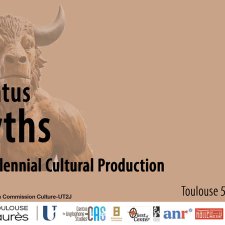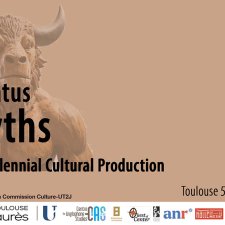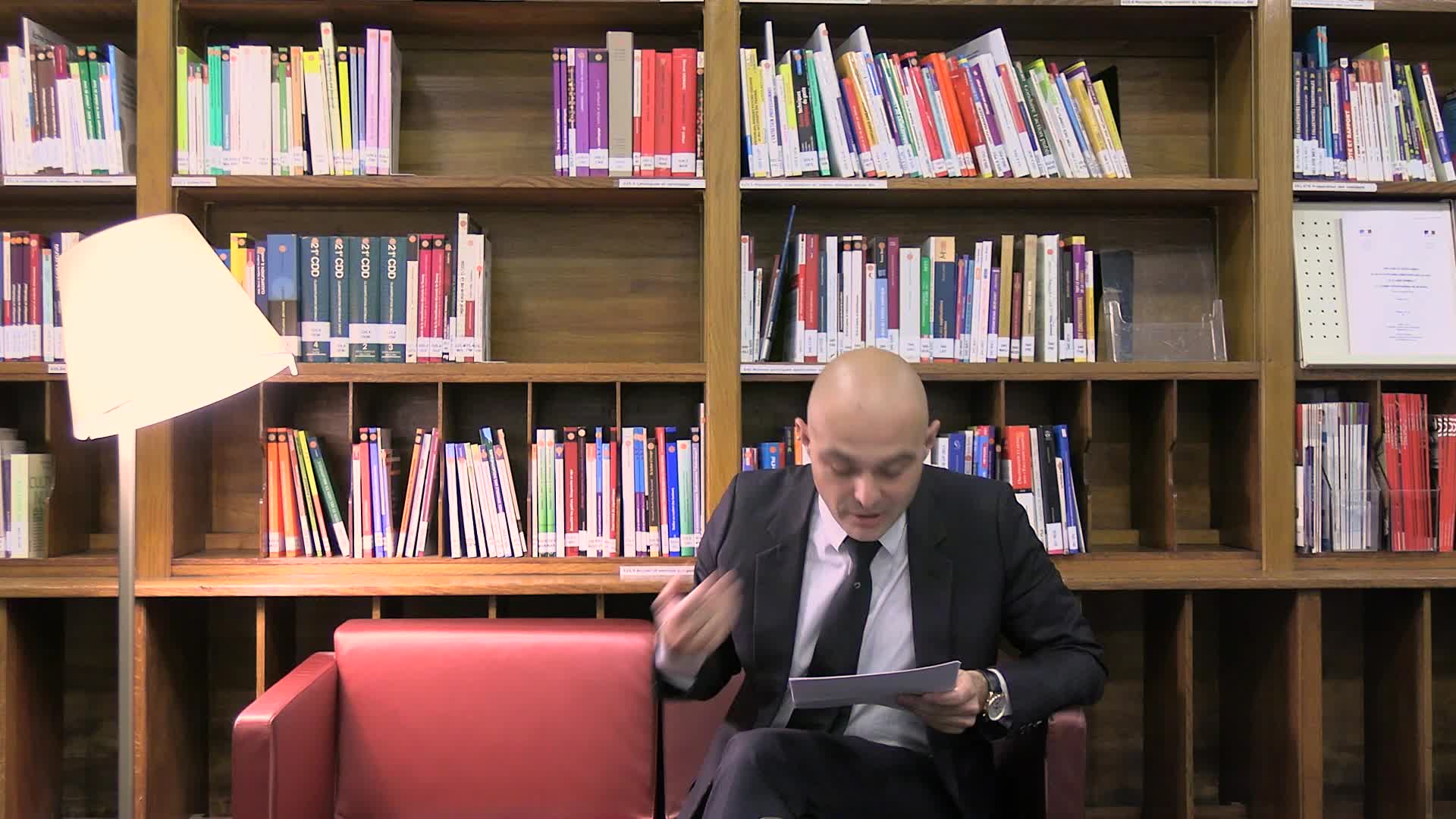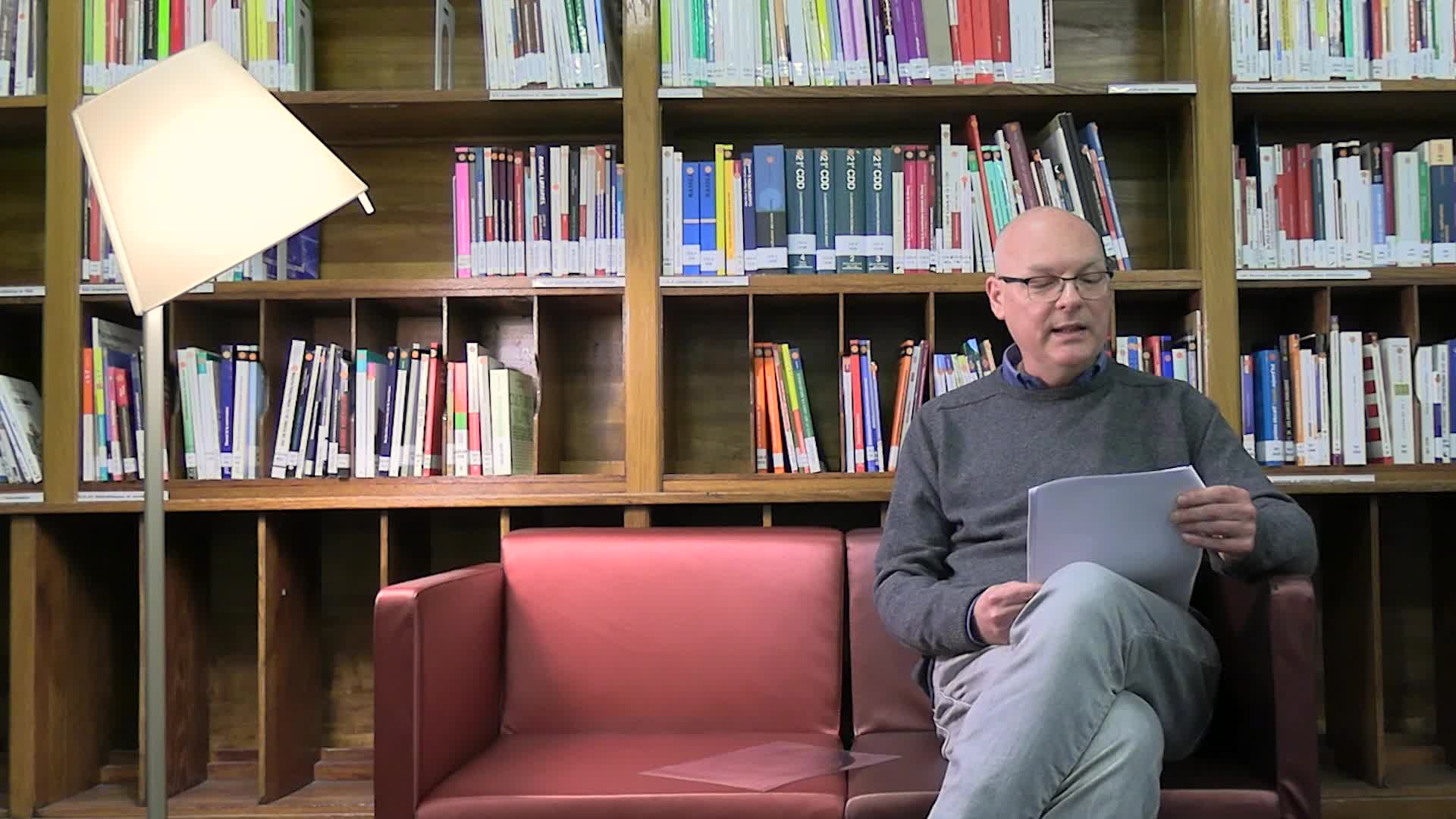Notice
Political, Ethical and Aesthetic Re-writings of Classical Greek, Yoruba, Biblical and Technological Myths in Temi Oh’s More Perfect (2023)
- document 1 document 2 document 3
- niveau 1 niveau 2 niveau 3
Descriptif
As founding narratives or idealized representations of historical figures, myths have, from time immemorial, tied humans together, creating communities that grow into organized societies. They have therefore become the safeguards of a vision of History that the arts and literature have ceaselessly spun into stories, in order to better transgress, deconstruct or simply revisit an ever-changing mythos. Contemporary stories reshape the contours of an all-too-often glorified past and they question our cultural heritage at the same time as rekindling it.
Creative imagination feeds on these forms of “poaching” as Michel de Certeau put it. This process is not entirely separable from a certain level of violence. The artist who ventures into the territory of myth challenges authority, creating a tension within the main collective discourse by allowing new voices to emerge. The Black Lives Matter movement gave rise to a wave of protest demanding the removal of statues. This undoubtedly characterizes a world where the expression of singular identities, whether ethnic, gendered, racial and/or social, is transforming mainstream culture. Current artistic productions embrace and question figures or facts that collective memory has mythologized, and this serves a restorative purpose in various ways. It behooves us to enquire into the political, ethical, cultural and economic implications of these rewritings. In the vast field of study that is gradually emerging from the cultural production of the new millennium, the worldwide success of Hamilton, the musical comedy by songwriter Lin-Manuel Miranda (2015), shows the extent of the sales-oriented potential of myth when it is spruced up with images borrowed from popular culture, but it also shows how contentious and controversial such revisions of myths can be, starting with the practice of colorblind casting which playwright August Wilson criticized as early as 1996.
Revisiting myths is also a powerful way to trigger literary creation: in the early 2000s Canongate Books launched the series “Myths Collection” and invited writers like Ali Smith, Margaret Atwood, A. S. Byatt or Jeanette Winterson to contribute texts that rewrite past narratives. If these contemporary rewritings tap into a certain marketability of myths, they might also raise the question of their status and nature. What is their relation to the model they were drawn from? To what extent are these rewritings of the past politically or historically relevant today? Do they belong to the category of “post-modern pastiche” as defined by Frederic Jameson (Postmodernism 1991)?
From a different perspective, we might turn to the recent controversy surrounding The Crown (2016), which has revived debates that oppose creative licence and historical objectivity. But do myths, even when they are linked to historical figures (albeit relatively recent ones), gain cultural acceptance because they reflect what people want to believe or because they are historically “accurate”? As Karen Armstrong suggests in A Short History of Myth, “a myth, therefore, is true because it is effective, not because it gives us factual information” (2005).
And what is at stake when George Saunders focuses on one episode of Abraham Lincoln’s private life in his novel Lincoln in the Bardo (2017)? Does the act of placing a national, much-mythologized figure into the realms of the intimate and the ordinary amount to replacing one episode of collective History with another, equally petrified, form? What, moreover, are the gendered implications of such shifts in focus from the public to the private sphere?
In other words, are we simply witnessing the substitution of one myth with another? Or, as in Feliz Gonzales-Torres’s double-mirror artwork “Orpheus, Twice” (1991), does re-actualisation make room for the evolution and complexification of myths? Are we facing, as Edouard Glissant described, an unreadable world that can only be understood through a creolized vision, a place of tension between heterogeneous realities (Alain Ménil, 2014)?
Intervention / Responsable scientifique
Dans la même collection
-
Staging and Assessing Martin Luther King’s legacy in The Nickel Boys by Colson Whitehead
PaquereauMarineAs founding narratives or idealized representations of historical figures, myths have, from time immemorial, tied humans together, creating communities that grow into organized societies. They have
-
The Sea as the Main Protagonist of Nobody, Alice Oswald’s Modern Rendition of Homer’s Odyssey
Jurša PotoccoBarbaraAs founding narratives or idealized representations of historical figures, myths have, from time immemorial, tied humans together, creating communities that grow into organized societies. They have
-
"This was a place of wonders once": David Rudkin’s Magical Landscapes
ButchersScarlettAs founding narratives or idealized representations of historical figures, myths have, from time immemorial, tied humans together, creating communities that grow into organized societies. They have
-
Pastoral Myth in the Anthropocene: Timescape and the Novel
ShadurskiMaximAs founding narratives or idealized representations of historical figures, myths have, from time immemorial, tied humans together, creating communities that grow into organized societies. They have
-
Demeter and Persephone Today: The Reception of the Mother-Daughter Bond in Young Adult Fiction
Salcedo GonzálezCristinaAs founding narratives or idealized representations of historical figures, myths have, from time immemorial, tied humans together, creating communities that grow into organized societies. They have
-
Circe in Feminist Revisionist Mythmaking: New Forms of Heroism
SchwallerPaulineAs founding narratives or idealized representations of historical figures, myths have, from time immemorial, tied humans together, creating communities that grow into organized societies. They have
-
Liminality and Ogbanje Identity in Akwaeke Emezi’s Freshwater and The Death of Vivek Oji: Reimagini…
PerrinMarionAs founding narratives or idealized representations of historical figures, myths have, from time immemorial, tied humans together, creating communities that grow into organized societies. They have
-
"There once was a girl in Ulster": Myth-based Drama and Feminism
TogoresArthurAs founding narratives or idealized representations of historical figures, myths have, from time immemorial, tied humans together, creating communities that grow into organized societies. They have
-
The Rewriting of the Myth of the Minotaur in The Minotaur (2008) by Harrison Birtwistle and David H…
HeberléJean-PhilippeAs founding narratives or idealized representations of historical figures, myths have, from time immemorial, tied humans together, creating communities that grow into organized societies. They have
-
The Myth of the Realistic Actor. ‘Photographic’ Acting and its Cultural Implications
UmanoAnaïsAs founding narratives or idealized representations of historical figures, myths have, from time immemorial, tied humans together, creating communities that grow into organized societies. They have
-
Blonde by Joyce Carol Oates : Myth-Making and Re-mythologizing
TrombleTanyaBenoitLauraAs founding narratives or idealized representations of historical figures, myths have, from time immemorial, tied humans together, creating communities that grow into organized societies. They have
-
"Reputation lives on like the echo of a song": Founding Myths in The Last Kingdom
SarrailYorickAs founding narratives or idealized representations of historical figures, myths have, from time immemorial, tied humans together, creating communities that grow into organized societies. They have
Sur le même thème
-
Staging and Assessing Martin Luther King’s legacy in The Nickel Boys by Colson Whitehead
PaquereauMarineAs founding narratives or idealized representations of historical figures, myths have, from time immemorial, tied humans together, creating communities that grow into organized societies. They have
-
The Sea as the Main Protagonist of Nobody, Alice Oswald’s Modern Rendition of Homer’s Odyssey
Jurša PotoccoBarbaraAs founding narratives or idealized representations of historical figures, myths have, from time immemorial, tied humans together, creating communities that grow into organized societies. They have
-
"This was a place of wonders once": David Rudkin’s Magical Landscapes
ButchersScarlettAs founding narratives or idealized representations of historical figures, myths have, from time immemorial, tied humans together, creating communities that grow into organized societies. They have
-
Pastoral Myth in the Anthropocene: Timescape and the Novel
ShadurskiMaximAs founding narratives or idealized representations of historical figures, myths have, from time immemorial, tied humans together, creating communities that grow into organized societies. They have
-
Demeter and Persephone Today: The Reception of the Mother-Daughter Bond in Young Adult Fiction
Salcedo GonzálezCristinaAs founding narratives or idealized representations of historical figures, myths have, from time immemorial, tied humans together, creating communities that grow into organized societies. They have
-
Circe in Feminist Revisionist Mythmaking: New Forms of Heroism
SchwallerPaulineAs founding narratives or idealized representations of historical figures, myths have, from time immemorial, tied humans together, creating communities that grow into organized societies. They have
-
Liminality and Ogbanje Identity in Akwaeke Emezi’s Freshwater and The Death of Vivek Oji: Reimagini…
PerrinMarionAs founding narratives or idealized representations of historical figures, myths have, from time immemorial, tied humans together, creating communities that grow into organized societies. They have
-
The Rewriting of the Myth of the Minotaur in The Minotaur (2008) by Harrison Birtwistle and David H…
HeberléJean-PhilippeAs founding narratives or idealized representations of historical figures, myths have, from time immemorial, tied humans together, creating communities that grow into organized societies. They have
-
Blonde by Joyce Carol Oates : Myth-Making and Re-mythologizing
TrombleTanyaBenoitLauraAs founding narratives or idealized representations of historical figures, myths have, from time immemorial, tied humans together, creating communities that grow into organized societies. They have
-
"Reputation lives on like the echo of a song": Founding Myths in The Last Kingdom
SarrailYorickAs founding narratives or idealized representations of historical figures, myths have, from time immemorial, tied humans together, creating communities that grow into organized societies. They have
-
Le Livre en question 6 : Romain Lucazeau
LucazeauRomainLecture de Romain Lucazeau : une création originale inspirée par les collections de la BIS
-
Le Livre en question 6 : Laurent Genefort
GenefortLaurentLecture de Laurent Genefort : une création originale inspirée par les collections de la BIS.














